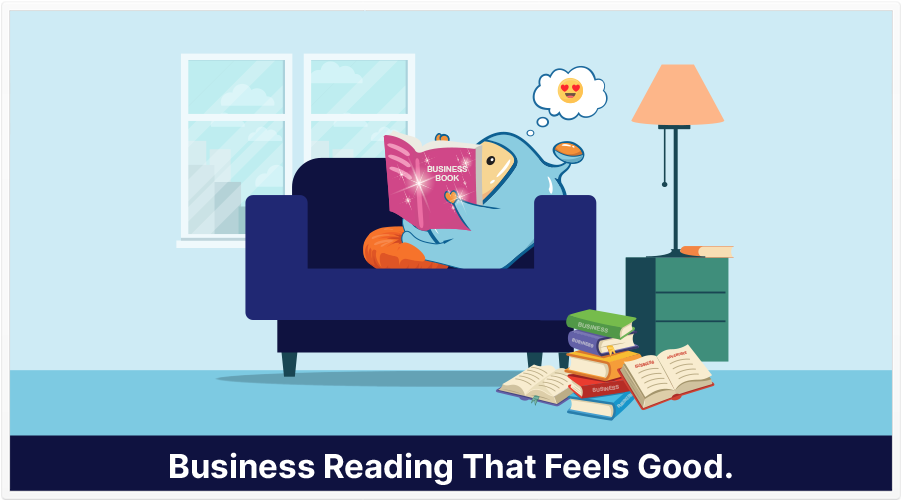
You’ve probably heard that people are more likely to do business with those they “know, like, and trust.”
Well, the more you can make people feel good, the more likely they are to like you.
And if writing (or having writers) makes up any portion of your business, you can get the most out of your marketing by communicating in a way that makes people want to hear from you.
So, how do we do that?
We can get some answers from an article that appeared in the July–August 2021 issue of Harvard Business Review.
Basically, you can write in such a way that it pleases readers on a primal level.
And, this isn’t just hearsay: each of the 8 techniques I’m going to list below are based on a controlled study, or observation. A lot of them are based on sound neurological science.
Technique #1: One word: Simplicity.
Keep it simple.
Us as few words as necessary, while conveying your thoughts as succinctly and accurately as possible.
Simple.
Technique #2: Specificity
Which sounds better: “roughly 2,” or “1.9”
Well…I guess you could say it depends on your reader, but what I’m trying to convey is that in business writing, people feel better if you’re specific.
Technique #3: Surprise
If you love fiction, you probably love a good surprise, twist, or plot revelation.
But how do you apply that to the “boring” world of business writing?
Well, what I’m trying to impress upon you is that business writing doesn’t need to be boring. In fact, depending on what you’re writing, it probably shouldn’t be boring.
So, how do we give our writing some form of entertainment value?
Cognitive dissonance.
What?
I bet you weren’t expecting that.
That’s an example of a surprise–or, at least my feeble attempt at one.
Cognitive dissonance is where the mind is asked to entertain two ideas that don’t go together.
One example I can think of is from a headline written by John Carlton, who is a successful copywriter.
Here’s the cognitive dissonance: “One-Legged Golfer”
Can you see the cognitive dissonance?
How can a golfer have one leg?
While that might not be a surprise, it is intriguing and unexpected.
Technique #4: Stirring Language
Emotionally charged wording can have more moving power than logic.
In fact, I’ve heard that people buy on emotion and reason with logic. That is, first, it’s emotion that moves people to buy; second, people justify their purchase with logic.
Technique #5: Seductiveness
Within the context of business writing, it may be hard to define seduction, but generally speaking, you want something that pulls your reader in.
If you think of the mechanics of seduction, usually, someone sees or hears something that stirs some desire in them, and then, they let the power of that seducer pull them in.
Curiosity-generation is probably a better term for what I’m trying to describe.
The best way I can advise you to use curiosity is to have something that catches the attention of your reader.
Perhaps it can be an interesting title to a white paper, or the opening sentence of a sales proposal.
Maybe it can be an opening question to a PowerPoint presentation that promises the answer to a question that’s been plaguing your reader.
So, that’s curiosity, but seduction goes a bit deeper.
To really pull this off in a seductive way, I’d say you have to know the deep desires of your reader, and stimulate that.
Technique #6: Smart Thinking
Your reader wants to feel smart, so try to reward them or at least say something that makes them think, “Yes, of course.”
Good writing (a logical sequence of ideas) is critical here, because if you want them to feel smart, they have to be able to follow you.
Technique #7: Social Content
To me, this technique just means to add the human, or social, aspect to your writing.
Add a bit of you into it (presuming that you’re the one “speaking” in the writing).
You can also talk about how your product or service has impacted the lives of others. Probably a good example is a case study.
Technique #8: Storytelling
Ah, yes, good old storytelling. It’s something we’ve been doing for thousands of years, and it’s been said that storytelling is a better way to learn than a strict sequence of data.
Telling a well-structured story that features your product or service is a great way to add a dimension of vision and emotive value to your offer.
In summary, there are the 8 S’s of writing that results in feel-good reading. If this has piqued your interest, and you want to learn more, I urge you to look at The Science of Business Writing, where you’ll find more constructive examples and the studies that lend credibility to each of the techniques.